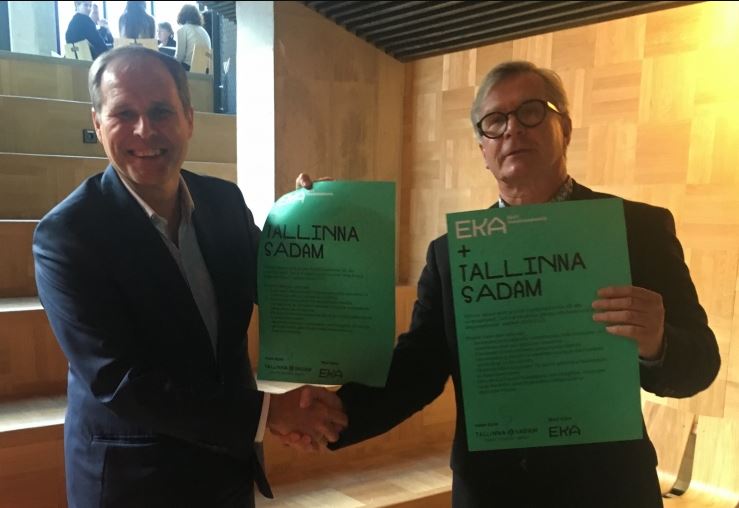
On 01 October, the Port of Tallinn and the Estonian Academy of Arts signed a cooperation agreement for the purpose of launching the research project “Tallinn’s Old Town: sustainable management and presentation”.
Valdo Kalm, chairman of the management board of the Port of Tallinn, says that the options for introducing Tallinn’s Old Town to its visitors have been extensively studied over decades. What needs to be considered now is what effect tourist flows will have on the future well-being of Estonia’s most important attraction. “As a company valuing responsible development and the largest gateway to Estonia, the Port of Tallinn will be looking for good, smart and modern knowledge-based solutions for exhibiting Tallinn as a destination in such a way which would disturb local residents less, make local businesses happy and make sure that tourists see the diverse facets of Tallinn.”
To achieve this goal, the Port of Tallinn has turned to the Estonian Academy of Arts to obtain academic input on the dignified and sustainable management and presentation of Tallinn’s Old Town as a UNESCO World Heritage site, which would ensure further development of the passenger line of business of the Port of Tallinn as well as opportunities for increasing the number of passengers.
Mart Kalm, Rector of the Estonian Academy of Arts, explained that the cooperation project will contribute to understanding the responsibilities of various parties in the management of world heritage sites and to addressing such issues of heritage conservation as the effect of tourism on invaluable interiors, which are, in part, medieval. “For the Cultural Heritage and Conservation Department of the EAA, this joint project is the first step towards applying for the UNESCO Chairs programme. The research project will also help to highlight the studies which have been and are being conducted, primarily, for the protection of the 20th century urban construction heritage and find solutions for the sustainable development of the areas of the Port of Tallinn.
The area of Old City Harbour has recently seen a number of events and idea gathering sessions which fostered community involvement; the design of its public space has been completed, and the Port of Tallinn has started bringing to life its Master Plan, which is the long-term development plan for Old City Harbour. This research project will also provide the port with additional input for devising a better connection of its territory with the city. Students of various curricula at the EAA will be collaborating with the representatives of the port to find solutions for such urban planning challenges as, for example, an easily navigable, environmentally friendly and, at the same time, interesting route between the port and the Old Town.
The cooperation project is to continue for three years under the supervision of Riin Alatalu, an EAA Associate Professor who has experience in the management of UNESCO World Heritage sites, and Triin Talk, an EAA PhD student with work experience in heritage conservation. The project is to be coordinated by a specially formed steering committee. Alongside the representatives of the Port of Tallinn and the Estonian Academy of Arts, it will also involve a representative of the Tallinn city government.
